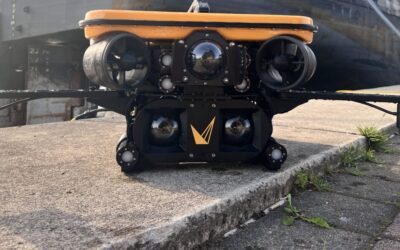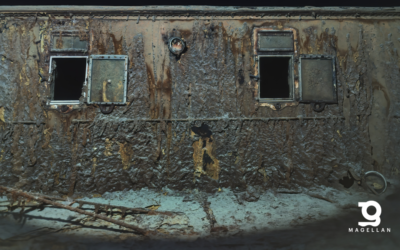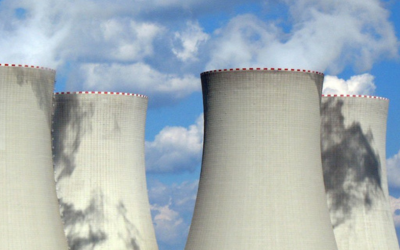The ocean sector has a clear emerging vision for underwater exploration – uncrewed surface vessels deploying autonomous subsea platforms. Which would reduce the cost of deployment and access to remote regions, for survey companies, research institutes and global navies.
With new commercial technologies enabling effective remote operations, and improved AUV capabilities allowing remote deployment and recovery, there remains some core technical challenges that must be overcome to accomplish this vision. One critical element is reliable and consistent subsea navigation.
Vision-based Navigation
Whilst subsea vehicles have successfully relied on high accuracy inertial navigation systems (INS) and coupled doppler velocity logs (DVL), this is a technology that inherently drifts, and increases in error over long duration missions without any external aiding. This problem can be minimized when using surface-based USBL positioning, or localized LBL positioning, but these solutions have limitations in deep water, and across wide areas, respectively. A truly autonomous framework will require complementary methods to deliver robust and long duration subsea positioning.
If we look to terrestrial applications for inspiration, driverless cars and aerial drones as an example, their solutions leverage imaging sensors and computer vision to deliver accurate navigational data. By detecting environmental features, the platform’s relative position can be tracked while simultaneously mapping the environment as it is perceived – technically referred to as simultaneous localization and mapping (SLAM).
Not only does this improve reliability, but it also provides a framework to reconnect with past perceptions by detecting loop closure events – an event where the autonomous vehicle recognizes a previously visited area and is able to correct its position with this knowledge.

It is evident that these same methodologies could be applied to underwater navigation, utilizing high resolution imaging data of the subsea environment from sensors like digital stills cameras and laser scanners.
Laser Loop Closure
Voyis has applied these terrestrial methodologies to the subsea environment by taking advantage of high-resolution 3D laser data from our Insight Laser Scanners. Subsea laser scanners are uniquely suitable for this application since they generate rich quantitative data in real-time, enabling the identification of environmental features during an active mission, and then detecting loop closure events when a location has been previously visited.
Real-time navigational data is used to identify loop closure regions, then the algorithms analyse the laser data to identify and match features. Once detected, these events can be input back into the navigational solution to eliminate the accumulated error. The identified loop closure events are illustrated below, matching features both on the shipwreck and in the surrounding seabed.


The improvement to navigational positioning is demonstrated in a trajectory error graph, where the baseline INS-DVL exhibits a positioning error of 0.6 meters after 10 minutes, while the laser loop closure aided solution continually maintains an error of less than 0.1m across the entire survey.

One benefit of this improved trajectory is drastically improved laser data registration from subsequent survey passes, utilizing loop closure feature matches to align all datasets. This would similarly benefit other sensor data types like image-based photogrammetry.
Future Applications
The potential uses for this technology spans all ocean sector survey applications. At a high-level, when mapping large areas for marine research or generating digital twins of offshore windfarms and oil & gas installations, more globally consistent 3D models can be produced with improved localization of critical features. The automated data registration capability drastically improves the repeatability of accurate measurements within the dynamic laser scanning dataset and simplifies the process of overlaying subsequent survey results, facilitating automated change detection analysis.
When using AUVs to search for specific targets, often first identified with side-scan sonar, an optical survey that needs to deliver complete coverage can achieve consistent positioning accuracy. This can be done throughout the entire mission by linking together successive survey passes, ensuring targets identified at any point in the mission can be localized with high accuracy for the ensuing human intervention. This can be particularly useful for naval mine countermeasures applications, where operating covertly limits the ability to surface for a GPS position update, or when operating in in GPS restricted locations.



Looking further ahead, this capability could be incorporated more tightly into long duration navigation methodologies, utilizing prior maps or survey databases to achieve continuous landmark navigation. Features of known locations from past surveys can be continually referenced, so that when the vehicle enters an established area it can reinitialize its global position by identifying features in the area.
The challenge of fully uncrewed ocean operations is inspiring innovations across the ocean economy, and at both sensor and system levels, bringing us closer to a future where we can explore and understand our oceans more efficiently and with better data than ever before.




